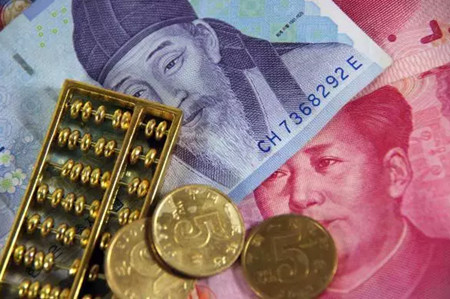
China's free trade agreements (FTAs) with the Republic of Korea (ROK) and Australia took effect on Dec. 20, which started the first round of tariff cuts, and a second round will follow next year on Jan. 1. Beijing has signed 14 FTAs involving 22 nations and regions throughout Asia, Latin America, Oceania and Europe.
The FTAs include ASEAN, Singapore, Pakistan, New Zealand, Chile, Peru, Costa Rica, Iceland, Switzerland, ROK and Australia, in addition to The Mainland and Hong Kong Closer Economic Partnership Arrangement (CEPA) and The Economic Cooperation Framework Agreement (ECFA) between the Mainland and Taiwan.
Beijing is also negotiating 9 free trade zones including Regional Comprehensive Economic Partnership (RCEP), China-Gulf Cooperation Council, China-Norway, China-Japan-ROK, China-Sri Lanka and China-Maldives.
China hopes to boost the China-Singapore free trade zone, 2nd stage of China-Pakistan free trade zone negotiation and follow-up on ECFA negotiations. The ROK FTA had involved the most extensive issues and the largest trade volume. Beijing and Seoul will eliminate tariffs on more than 90 percent of traded goods and 85% of trade volume.
And the one with Australia brings trade and investment thresholds to one of the lowest in the world. This marks a significant success story for the China free trade zone.
Yet, China still has a long way to go, particularly when comparing it to the Trans-Pacific Partnership (TPP). The number of free trade zones is growing globally, while the level of trade liberalization is rising.
To adapt to new global development trends, to deepen reform and to frame a new opening-up, Beijing would accelerate its free trade zone strategy. On Dec. 17, the Directives on Accelerating Implementation of Free Trade Zone Strategy were issued that address three levels: with neighbors, in the Belt and Road, and around the world.
To speed up free trade zone construction with neighbors. China hopes to establish free trade zones with all neighboring countries and regions so as to cement economic and trade ties and to build cooperative win-win markets.
In efforts to form a Belt and Road market for more commerce, trade, and open roads. Beijing also endeavors to set up free trade zones with most emerging economies, major developing economies, major regional economic groups and developed countries.
China aims to build larger markets with BRICS (Brazil, Russia, India, China and South Africa), emerging economies and developing countries. This is the first strategic stage that draws a top-down design for China's free trade zone construction, and it's China's free trade zone strategic planning roadmap.


















































